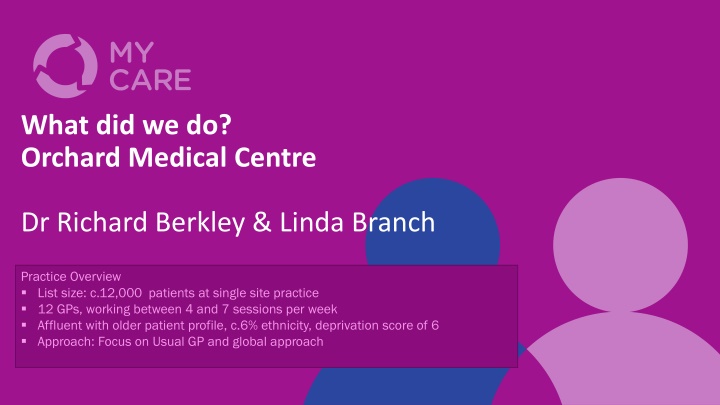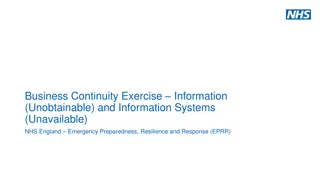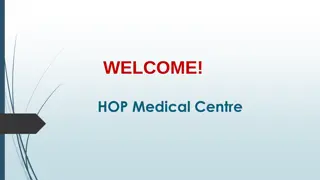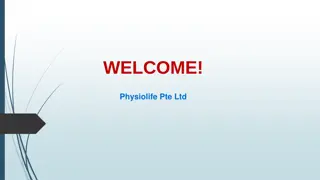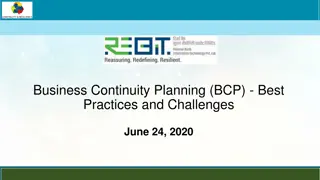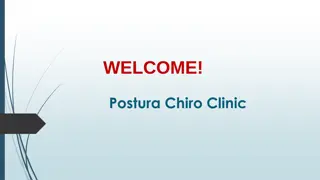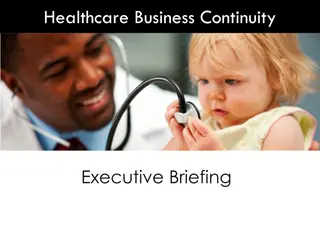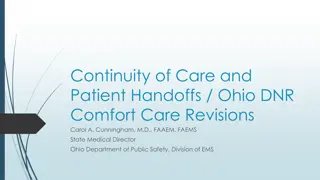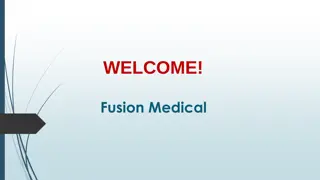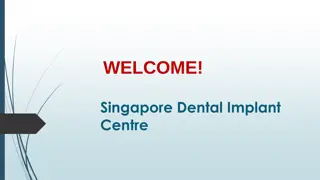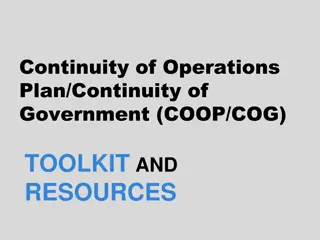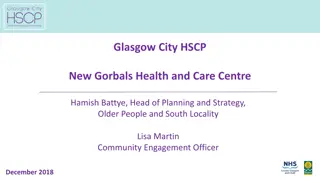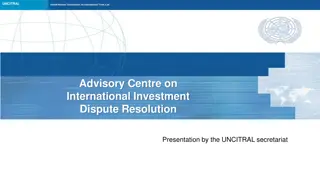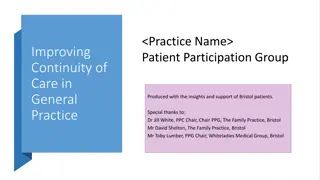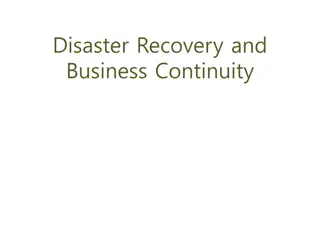Enhancing Continuity of Care at Orchard Medical Centre
Orchard Medical Centre, with a patient base of 12,000, focused on improving continuity of care through a global approach. Their initiative included staff training, patient education, tools like EMIS, and feedback collection. By promoting continuity of care, they aimed to create a culture of understanding among both patients and staff for better healthcare outcomes.
Download Presentation

Please find below an Image/Link to download the presentation.
The content on the website is provided AS IS for your information and personal use only. It may not be sold, licensed, or shared on other websites without obtaining consent from the author.If you encounter any issues during the download, it is possible that the publisher has removed the file from their server.
You are allowed to download the files provided on this website for personal or commercial use, subject to the condition that they are used lawfully. All files are the property of their respective owners.
The content on the website is provided AS IS for your information and personal use only. It may not be sold, licensed, or shared on other websites without obtaining consent from the author.
E N D
Presentation Transcript
What did we do? Orchard Medical Centre Dr Richard Berkley & Linda Branch Practice Overview List size: c.12,000 patients at single site practice 12 GPs, working between 4 and 7 sessions per week Affluent with older patient profile, c.6% ethnicity, deprivation score of 6 Approach: Focus on Usual GP and global approach
Ambition and focus Areas of work Areas of work To take a global To take a global approach to improve approach to improve continuity for those continuity for those patients in the practice patients in the practice that want or need it that want or need it Notes Notes Our focus was to improve continuity of care for all patients at the practice rather than for a particular cohort. As a smaller practice on one site we felt this was doable. This approach worked for us as we recognised there was an overlap with other initiatives at the practice, such as the productive general practice frequent user modules. The work included updating and maintaining the usual GP field on EMIS and the inclusion of Long Term Condition Nurses within the project, all with the aim to improve continuity to those that want or need it. To create a culture of To create a culture of continuity within the continuity within the practice practice We worked hard to ensure a practice-wide understanding of why continuity of care is important for both patients and staff. We increased staff training and skills to deliver continuity of care. We built on the care navigator training our reception staff had recently had.
Key activities What we did What we did Tools used Tools used Notes Notes We provided patients with information using the leaflets and posters available from the project and displayed the continuity of care animation in the waiting room Pre-Covid-19 we promoted continuity of care on our telephone message We used flags and reminders on EMIS to support staff with the new continuity of care process We circulated questionnaires to patients to hear their views on continuity of care We carried out our own baseline audit of patients seeing their usual GP We have periodically re-run the continuity of care measuring tool to assess the changes We continue to make ongoing tweaks to our system to give our Reception Team the best chance of achieving continuity where this is required There are regular meetings with our Reception Team on the importance of continuity and to address any questions or issues arising from promoting continuity We ensured the shift leads were equipped to train and support Reception Team colleagues We made changes to our navigation tool to support continuity of care Evaluation Evaluation Openness to change Openness to change our system our system Promoting continuity Promoting continuity of care of care
Patient Focused 1. The practice participated in the patient and staff surveys undertaken by Mott McDonald as part of the Health Foundation programme, and we look forward to hearing those results. 2. We carried out an audit of resistance with patients to help the Reception Team understand why patients choose NOT to book with their own GP. We used the template shown. The audit was done for 1 week. It found patients were willing to wait over a week to see their usual GP. An unexpected consequence of the audit was it initiated continuity conversations among staff, building towards our culture of continuity.
Reception Team and Care Navigator Role Using care navigation has been key in supporting CoC. One of our GPs shared how it feels as a GP to see the same patient, and how it feels to see a patient they do not know. This was powerful and an important session for staff as it helped them to understand why GPs value it. For the Reception Team who can struggle to find an appointment, understanding that continuity can lead to less appointments was a key concept in their buy-in to continuity. Ensuring our Reception Team understand continuity we believe helped maintain continuity during the pandemic.
Use EMIS to support CoC Using the clinical system to support continuity of care was a key part of our project. We added continuity of care flags to patient records and pop-up reminders for the Reception Team. An important one for us was to review the Profile Amendments of Online Bookings and change the settings to support patients to book with their GP see screenshot below. The screenshot shows that changing the field patient facing services to own patients only will result in the user having to select from a drop down.
Achievements We now have a continuity of care culture embedded within the practice, and we continue to promote continuity of care for patients. We achieved 49% continuity for our frequently attending patients based on the Usual Provider of Care measure for how often a patient saw the same GP across the 12-month period. Using the St Leonard s Indicator of Continuity of Care (SLICC) to measure how often patients who consulted in the previous year saw the same GP, the results showed almost one-third of patients saw the GP named in their patient records as their usual GP.
What have we learnt? Comparison with other participating practices was useful. It highlighted to us that our practice had above average use of consultations by frequently attending patients. 2% of our list were frequently attending patients (i.e. consulted 9 or more times in the year) and this group of patients was using 10% of the consultations. Covid-19 has had an impact on continuity. For example, a GP taking on an additional role to respond to the pandemic meant a decrease in continuity of care for that GP. We also saw from the monthly results that continuity was affected when a GP is on annual leave and where there have been Covid-19 related absences. We have embedded a culture of continuity with reception team colleagues, including it as part of core training for staff, and this has been key in supporting continuity of care within the practice. Having a session with a GP who explains why continuity of care is important to both patients and to GPs is a very powerful way to get the across the importance of continuity to the wider practice team.
Our View. Historically the subject of continuity was one which was regularly mentioned as a good idea and something we would like to improve upon but we always found that the immediate pressures of Primary Care overtook and hampered us in really getting our teeth into the principle in a satisfactory manner. The Continuity of Care project appealed to us as something to get involved in due to the benefits we believed it could bring to both our patients and staff. By being involved in the project it helped us focus on the topic, thanks to having meetings scheduled in the diary and actions arising from meetings to take and report back on. As a practice we chose to look at embedding continuity into the culture of the organisation; if we could ensure all our staff understand the benefits then they in turn can educate the patients on the benefits of maybe waiting an additional day or two to see their usual GP. We are proud to say that we believe the continuity culture we sought does now exist and whilst there are of course occasions where it is not possible, the desire to provide continuity as much as possible does not waiver. This clearly is an area that can have knock on benefits to patients, our work and also the wider system . Linda Branch, Patient Experience Manager
Continuity of Care Project Manager: Continuity of Care Project Manager: Julia.Martineau@onecare.org.uk Julia.Martineau@onecare.org.uk
